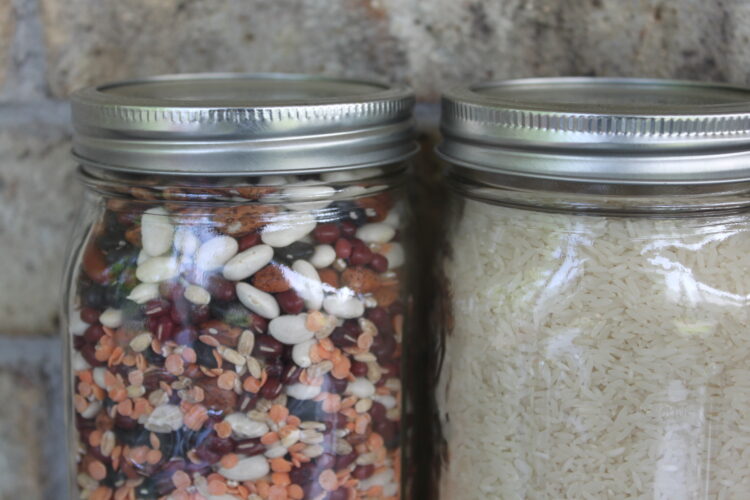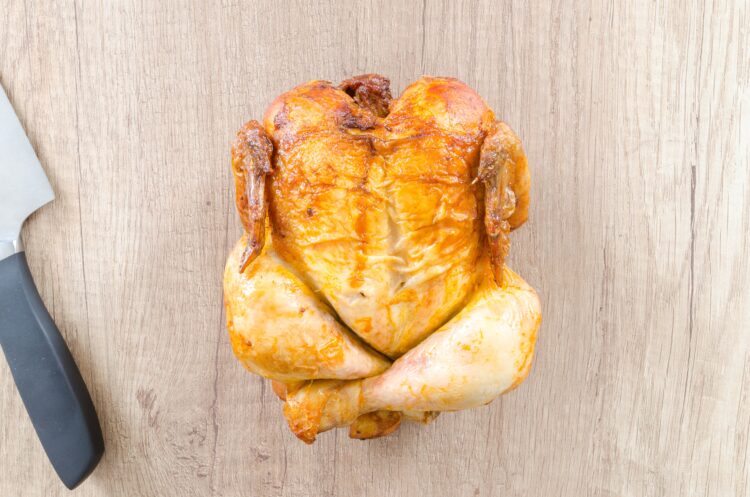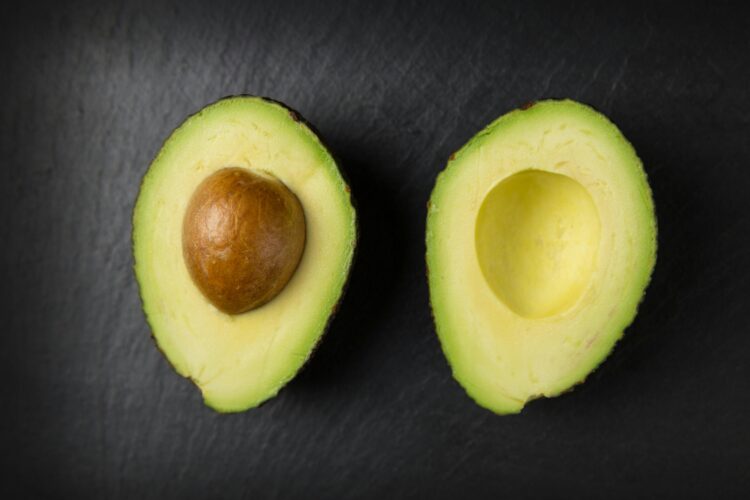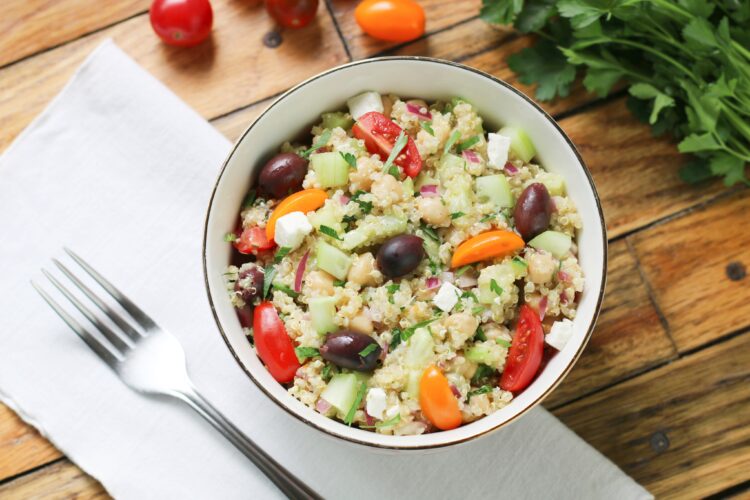Looking to eat healthy on a budget? Learn the basics of healthy eating, how to balance carbs, protein, and fats, and get budget-friendly tips to fuel your body.
New to real food? Go here to learn the basics or what we mean when we say “real food” or “whole food.”

I know eating healthy can feel totally overwhelming, especially when you’re trying to stick to a budget or deal with food allergies. With all the conflicting information online, it’s hard to know what healthy eating even looks like. Is it gluten-free? Keto? Protein shakes every day?”
Today, I want to break it down for you in simple terms—so you can start eating healthier without the stress. First, let’s learn a little more about nutrition and how to create a healthy meal.
And here’s my obligatory disclaimer: The information here is for educational and inspirational purposes only and does not provide medical advice. Relying on any information provided is at your own risk. For more information please read our Disclaimer.
What is Healthy Eating? A Simple Guide for Beginners
You’ve probably heard the term ‘nutrition’ tossed around, but what does it really mean? In simple terms, nutrition is how the food we eat fuels our bodies. Today, I’m going to break it down for you—specifically, how three main types of nutrients—called macronutrients—fuel your day.
Understanding the Basics of Nutrition & Eating Healthy: Macronutrients
Macronutrients are the nutrients our bodies need in large amounts for energy, growth, and overall health. The three main macronutrients are carbohydrates, proteins, and fats, and each plays a unique role in fueling our bodies.

Macronutrient #1: Carbohydrates—Your Body’s Primary Fuel Source
Carbs are your body’s primary fuel source. Think of them like the gas in a car—without them, it’s hard for your body to run efficiently. Carbs come from foods like fruits, vegetables, grains, and legumes.
Not all carbs are created equal! Whole grains, fruits, and vegetables are examples of complex carbs—these are the healthy carbs that provide lasting energy.
On the other hand, foods like candy, chips, and white bread are simple carbs that give you a quick burst of energy but can leave you feeling sluggish. Most of what we consider “processed food” falls into this category.
Once carbs are digested, they break down into glucose (a form of sugar), which your body uses for quick energy. This is why we need carbs to power us through daily activities.
The amount of carbs you need changes throughout your life. When you are younger or are more active, you need more carbs to fuel you. As we age, we still need carbs, but the amount and type we need can change. This might be why so many people jump onto the low-carb and ketogenic bandwagon. The Standard American Diet is heavy on simple carbs, so eating real food automatically decreases your simple carbs intake.
Eat Healthy: Common Carbs to Include in Your Diet
Go here to see our budget-friendly tips for eating whole grains!

Macronutrient #2: Protein—Building Blocks for a Healthy Body
Proteins are the building blocks for your muscles, skin, and hair. They’re essential for the growth, repair, and maintenance of tissues in your body. Foods like meat, fish, eggs, beans, and nuts are packed with protein.
When you exercise, your muscles need protein to repair themselves and grow stronger. Protein also helps support your immune system, making it essential for staying healthy. Even if you don’t exercise (although you should!), your body needs protein.
Eat Healthy: Cheap and Healthy Protein Sources for Your Meals
Need some budget-friendly protein ideas? Find 10 simple protein sources here.
Here’s how we afford high-quality meat on a budget!
- Chicken (whole, bone-in, and thighs are some of the cheaper cuts)
- Ground beef
- Ground turkey
- Canned tuna
- Canned salmon
- Cottage cheese
- Greek yogurt
- Eggs
- Get more ideas here!

Macronutrient #3: Healthy Fats for Sustained Energy
Fats often get a bad reputation, but they’re crucial for your body. Fats provide a slow, steady energy source and are essential for brain function, hormone production, and absorbing certain vitamins.
There are good fats and bad fats. Healthy fats—like those from avocados, nuts, seeds, and olive oil—are generally considered good for your heart. On the other hand, trans fats (often found in processed foods) should be avoided. Fats take longer to digest, providing a longer-lasting source of energy. This is why fats are especially important if you’re looking for sustained energy throughout the day.
Healthy Fats: Which Ones to Include in Your Diet
Here’s how we afford healthy fats on a budget!
Everyone’s body is different, and there is no one-size-fits-all approach to healthy eating. If you have specific health concerns or need personalized guidance, it’s always a good idea to consult with a healthcare provider or nutritionist.
You Don’t Need a Fad Diet to Eat Healthy
We’ve all seen them: someone pops into our social media claiming that their special diet or supplement will help you lose weight, eliminate bloating, and achieve your dream body.
That’s a lie.
The only thing that will help you be healthier is a consistent, sustainable lifestyle change. Certainly, a lot of these diets can help you learn more about your body, discover what foods fuel you, and they might even help you lose weight for a little while. But constantly dieting and starving yourself while eliminating whole food groups can do more long-term damage to your physical and mental health.
While I believe in a balanced, sustainable approach to eating, this post reflects general advice that works for many people. For more specific guidance related to medical conditions, talk to a registered dietitian or doctor.

How to Create Balanced Meals: A Step-by-Step Guide
It’s important to have a balance of carbs, protein, and fats in your diet. Each macronutrient plays a unique role, and getting the right balance helps you stay energized, satisfied, and healthy.
You don’t have to become a nutrition expert overnight (or ever). Instead, just start paying attention to how food makes you feel and experiment with balance.
How to Balance Carbs, Protein, and Fats for Optimal Health
To create a balanced meal:
- Include a healthy source of carbs (like brown rice or sweet potatoes), protein (like chicken, beans, or eggs), and fats (like avocado, olive oil, or nuts).
- A plate that’s half full of vegetables is also a great way to add extra nutrients and fiber!
- Start by focusing on one meal a day, like dinner or lunch, and try to get a good mix of carbs, protein, and fats. The more you practice, the easier it gets.
Everyone’s body is different. There is no single diet that will help everyone achieve the same results. If you are struggling with health issues or weight loss, talk to your doctor.

Easy Healthy Meal Ideas on a Budget
Here are a few meal ideas, including the macronutrients in each meal.
Meal Idea 1: Greek Quinoa Salad with Chicken
Get the recipe here!
- Protein: Chicken, quinoa
- Carbs: Quinoa
- Fats: Feta, olives, dressing
- Extra Fiber & Nutrients: Cucumber, tomatoes, onions
Meal Idea 2: Egg & Cheese Muffin with Oatmeal
Get the recipe here!
- Protein: Eggs
- Carbs: Oatmeal
- Fats: Cheese, butter
- Extra Fiber & Nutrients: Any optional vegetables added to the muffins. Oats are also a source of fiber.
Meal Idea 3: Easy Beef & Vegetable Soup
Get the recipe here!
- Protein: Ground beef (or turkey)
- Carbs: Potatoes
- Fats: Naturally occurring from the ground beef
- Extra Fiber & Nutrients: Carrots, onion, cabbage, and any other vegetables you add

Eat Healthy on a Budget
Let’s review:
Eating healthy can feel overwhelming, especially with all the conflicting information out there. Nutrition is about how the food we eat fuels our bodies, and macronutrients (carbs, proteins, and fats) each play an important role in keeping us energized and healthy. The key is finding balance—so focus on eating a mix of carbs, protein, and fats to create meals that fuel your body, and remember that sustainable lifestyle changes are the best approach, not fad diets.
Need some practical, baby steps for eating healthy, real food? Join my newsletter!
Healthy eating is a personal journey, and the guidelines in this post are just a starting point. Experiment with different foods and meal combinations to see what makes you feel your best.




